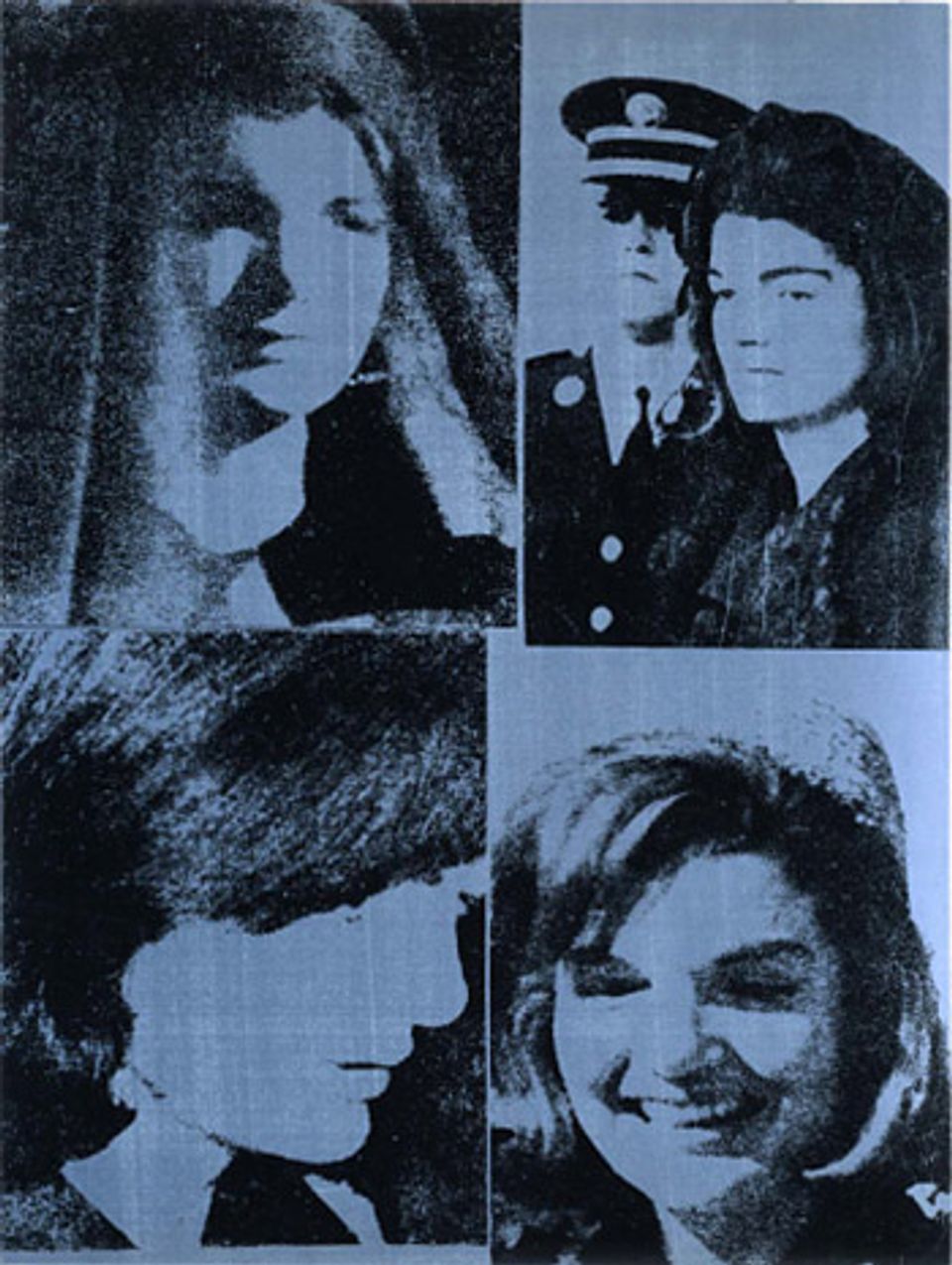
Andy Warhol's Jackie III, from the portfolio 11 Pop Artists, Volume III

Art critic of the Los Angeles Times since 1989, Christopher Knight, the second speaker in this year's Clarice Smith Distinguished Lecture series, illuminated the life, work—and hair pieces—of Andy Warhol. In his highly engaging talk, Warhol's Wig: Cracking the Pop Art Code, Knight showed us how Warhol went from a successful career as a commercial artist to an "art star" and a personage of international renown. Warhol, it seemed made very deliberate choices about everything, from what he painted or silkscreened, to even what he put on top of his head.
That's where Knight has cracked the code. Warhol's work from his iconic Campbell Soup Cans to his celebrity portraits to his "Disaster series" are well known. But why soup? This was the late 1950s, early 1960s, and canned goods were a symbol of our brave new world. Why not baked beans, or even Alpo, the first commercially available dog food on the market? A can is a can is a can....
Well, not really. In order to understand Warhol, you have to understand something about Willem de Kooning, the most important painter of the New York School: the big-man-on-campus compared to Warhol's new-kid-in-town. In a contemporaneous film de Kooning is quoted as saying, "Everything is already in art. Like a big bowl of soup. Everything is in there already, and you stick your hand in and you find something for you." According to Knight, "soup" was essential studio slang in the 1960s, referring to the "robust, fluid paint" in Abstract Expressionism.
Warhol stuck his hand in the soup, and struck gold. His soup cans can be seen as his interpretation of de Kooning's words. For Warhol, subject matter was not an accident, but a deliberate play for recognition in the art world. As Knight demonstrated, when Warhol painted soup he was painting what de Kooning painted. Knight showed more examples from the Warhol oeuvre to support this idea.
According to Knight, the subject of Warhol's work was not commodity or celebrity, but other art, "and usually the other art that was standing in the way of his own success." Warhol adapted not just De Kooning's "soup," but the Dutch American artist's thick mane of hair, his silver "laurel wreath" and placed it on his own head.
If you were unable to attend Knight's lecture, here is his talk:
The Clarice Smith Distinguished Lecture Series in American Art concludes on November 4 with a talk by celebrated scholar Lawrence Weschler.

















